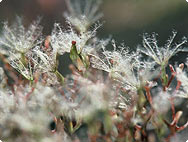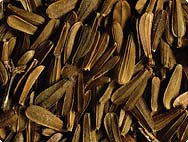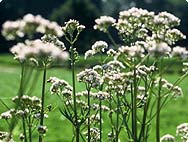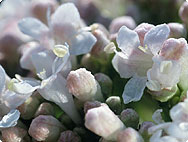A.Vogel search
When the internal search is activated, personal data such as your IP address is transmitted to our search engine Cludo. Data is thus transferred to a third country. Please click here if you want to display the internal search. You can find more information on data protection here: Privacy policy.
A.Vogel plant encyclopaedia
Valeriana officinalis L.
Valerian
History

As early as the 4th and 5th centuries B.C., valerian was of great importance to followers of Hippocrates, who used it to treat women’s diseases. Ancient physicians referred to this plant as “Phu” (this name also appears in medieval almanacs). These early healers differentiated between phu magnum, or Theriacaria; phu vulgare or common valerian (also known as cat’s valerian) and phu minus, or small valerian. We come across the plant in the writings of Dioscorides, Pliny and in the medical works of the abbess Hildegard von Bingen.
The botanical name valeriana is not to be found in classical Latin texts and does not appear in a Latin translation until Isaac Judaeus’ 10th century work “De diaetis”; it later appears in various herbals. According to Bartoldi, the plant was named after the Roman district of Valeria in the province of Pannonia (an area south and west of the Danube). Contrary to popular belief, the herb’s name probably has nothing to do with the Latin word valere meaning “healthy, valuable”; rather it may perhaps only share an etymological root. Tschirch believes it possible that the name derives from Arabic. Still another claim purports the word Valeriana to have evolved from the German term baldrian and before that from the low German word bullerjan, which was adulterated to balderjan. This term can be linked to the god of light, Baldur and his Christian version, St. John. The word officinalis is a medieval Latin term meaning “of use in the apothecary”.
In the old days, valerian was much more widely used than it is now. It was used as a warming drug, an emmenagogic, febrifugal and diuretic. It was also administered to cure afflictions of the spleen and the plague, back pain, coughs and eye complaints. It was used externally to combat ulcers and fig warts (condyloma). Today’s use as a nervine and sleeping draft is not mentioned anywhere. It was not until Italy in the seventeenth century that the plant was used to cure epilepsy. Strong-smelling plants such as Valeriana officinalis were always important to ward off devils, witches and all manner of bad spirits. Even today in certain rural areas, a bunch of valerian is often hung up together with a bunch of wild marjoram above the entrance to one’s home or a barn in order to protect the inhabitants from misfortune and evil.
Botanical characteristics

Valerian is a perennial plant with an extremely varied morphology. It comprises a sturdy rhizome with many secondary roots and short runners. In spring the plant develops a basal rosette with pinnate leaves. From around the second year of growth the plant sends up a rotund, furrowed, hollow flowering stem which grows to a height of between 80 and 120 cm and branches out at the top. The lance-like pinnate leaves issue forth from either 9 to 21 finely serrated leaflets, or from a single pinnate. The leaves are pale green on the upper surface and darker underneath; they are attached in pairs to either side of the stem. The stems terminate in umbels bearing many branches and tiny white and pale pink flowers. The fresh plant is odourless. The typical valerian smell can only be detected faintly emanating from the fresh root and its intensity increases only once the plant has been dried. This odour attracts cats and it has a curiously intoxicating effect on them.
The flowers are in bloom from May to August.
There are 150 species of the genus Valeriana, of which four species are officinal in Europe. The European Pharmacopoeia lists Valeriana officinalis LINNÉ as a collectable species, giving it the additional category of “s.l.” (meaning “sensu latiore”, in the broader sense). In order to prepare the drug, “Valeriana radix”, V. sambucifolia, V. procurrens, V. collina and V. exalta may be harvested [1]. Besides Valeriana officinalis, two other species of this genus are used to prepare herbal remedies: the Mexican species of valerian, V. edulis NUTT. ssp. procera and the valerian indigenous to Pakistan and India, V. wallichii DC. Both species are rich in valepotriates. Unlike V. officinalis, these species are used as daytime sedatives [cf. the Commission E Monograph].
Habitat

Valerian can be found in temperate zones throughout Europe, but it also grows in the Caucasus, west and central Asia, Siberia, Manchuria and Japan. It grows in all sorts of weather conditions and its various leaf-forms are able to adapt to the specific conditions of each particular environment. Generally speaking, the plant prefers damp locations on the banks of streams and rivers, in ditches or on damp pastures, but it is also to be found on elevated ground in mountainous areas. Plants originating from mountainous regions are usually more aromatic than those occurring in areas of swamp or marshland.
Preparation

Valerian is cultivated in organically controlled crops by farmers specially appointed by A.Vogel/Bioforce to grow the plant. Following harvesting in autumn, the roots and rhizome are macerated in alcohol without undergoing a drying process.